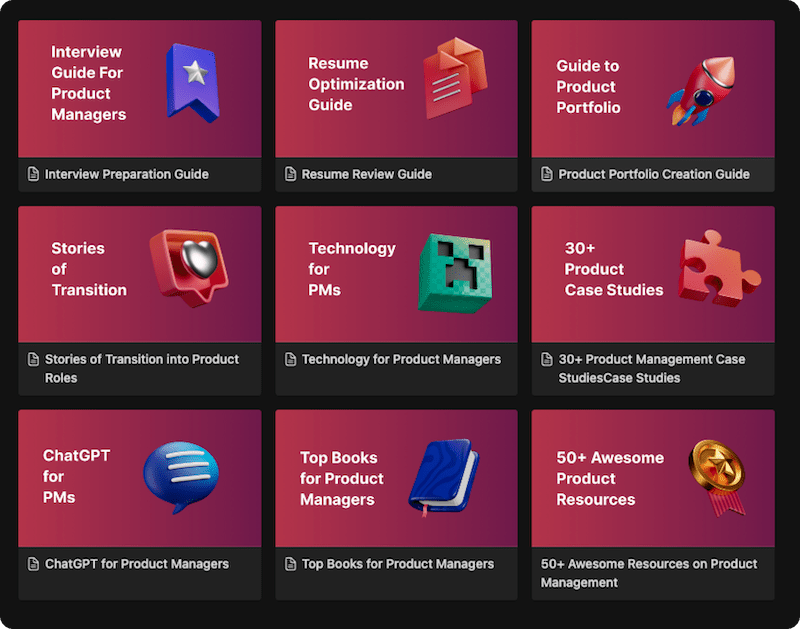You’ve spent weeks, maybe even months, perfecting a new feature design. The user flows are elegant, the components are pixel-perfect in Figma, and the interactive prototype feels like magic. With a sense of accomplishment, you package it all up and hand it off to the engineering team. A few sprints later, you get the first build back and… it looks nothing like you imagined. Spacing is off, interactions are clunky, and edge cases are completely broken. What went wrong?
This frustrating scenario plays out in countless companies, and it almost always points to a breakdown in one of the most critical and misunderstood stages of product development: the Engineering Handoff.
Many teams treat this as a single moment in time—a transactional event where designers “throw their work over the wall” to developers. But this mindset is the root of the problem. A great handoff is not a moment; it’s a process of communication and partnership. This guide will make you a master of that process. We’ll break down what a modern handoff looks like, provide the ultimate checklist for success, and reframe your thinking to help you and your team ship better products, together.
Definition and overview
An Engineering Handoff (also known as a Design Handoff or Developer Handoff) is the process of transferring a completed product design, along with all the necessary documentation, assets, and context, from the design team to the engineering team so they can begin implementation.
Think of an architect giving blueprints to a construction crew. A bad architect emails a PDF of the blueprints and hopes for the best. A great architect walks the crew through the plans, explains the critical structural elements, clarifies the specific materials required, and remains available to answer questions when unforeseen problems arise on the construction site.
The goal of a modern engineering handoff is to be that great architect. It’s not about creating a massive, 100-page specification document. It’s about providing the engineering team with the clarity, context, and assets they need to build the feature correctly and efficiently, minimizing guesswork and rework.
The Evolution of the Handoff: From Waterfall Walls to Agile Bridges
The nature of the handoff has changed dramatically with the shift in development methodologies.
- The Old Way (Waterfall): In a traditional Waterfall process, the handoff was a massive, one-time event. The design team would work in isolation for months to produce a highly detailed, exhaustive specification document. This document was then “thrown over the wall” to the engineering team, who were expected to build it exactly as specified, with little to no further interaction. This often led to misunderstandings, and any changes were slow and costly.
- The New Way (Agile): In Agile and Lean environments, the handoff is not a single event but a continuous, collaborative process. Engineers are involved early in the design phase to provide feedback on feasibility. The handoff happens in smaller, iterative chunks—often feature by feature within a sprint. The goal is a partnership, with communication flowing freely between design and engineering throughout the entire development cycle.
The Ultimate Engineering Handoff Checklist
A seamless handoff doesn’t happen by accident. It requires deliberate preparation and clear deliverables. Here is a comprehensive checklist to guide your process.
Phase 1: Before the Handoff (Laying the Foundation)
This is about setting the stage for success long before the final designs are ready.
- Involve Engineers Early and Often: Invite developers to design critiques and brainstorming sessions. Getting their input on technical feasibility and constraints early can save weeks of redesign work later.
- Establish a Shared Language: Work from a single source of truth. A robust Design System with pre-approved components, styles, and naming conventions is the most powerful tool for this.
- Agree on a Handoff Tool: Standardize where the handoff happens. Is it Figma’s Dev Mode? A dedicated tool like Zeplin? Or a documentation page in Confluence? Make sure everyone knows where to look.
- Define the Scope Clearly: The Product Manager must provide a clear Product Requirements Document (PRD) or user stories that define the feature’s goals, scope, and acceptance criteria.
Phase 2: During the Handoff (The Key Deliverables)
This is the core package of information that designers prepare for engineers.
- An Organized Design File:
- Clean Layers and Groups: Name your layers logically. Don’t hand over a file named “Rectangle 481 Copy 2.”
- Use Components and Styles: Leverage reusable components and defined text/color styles from your design system. This tells engineers “this is a standard button,” not “this is a custom one-off.”
- Detailed Design Specifications (Specs):
- Measurements and Spacing: Clearly define spacing, padding, and margins (Auto Layout in Figma is great for this).
- Typography: Specify font families, sizes, weights, and line heights.
- Colors: Provide hex codes, RGBA values, or variable names for all colors.
- Comprehensive User Flows and Prototypes:
- User Flow Diagrams: A visual map showing how a user navigates through the different screens to complete a task.
- Interactive Prototypes: A clickable prototype is worth a thousand static mockups. It demonstrates the intended interactions, transitions, and animations.
- All States and Scenarios (The Edge Cases):
- Empty States: What does the screen look like before there is any data?
- Error States: What happens when an API call fails or a user enters invalid information?
- Loading States: What does the user see while data is being fetched?
- Success States: What confirmation does the user see after completing an action?
- Exportable Assets: Provide all necessary icons, images, and illustrations in the correct formats (e.g., SVG for icons, WebP/PNG for images) and resolutions.
Phase 3: After the Handoff (Ongoing Collaboration)
The handoff isn’t over when the files are sent.
- The Handoff Meeting: Schedule a dedicated meeting to walk the engineering team through the designs and prototype. This is their chance to ask questions and your chance to explain the “why” behind your design decisions.
- Be Available for Questions: Unforeseen technical challenges will arise. Make it clear that designers are available on Slack, for quick calls, or in “office hours” to resolve ambiguities.
- Perform Design QA (Quality Assurance): Before the feature is released, the designer should review the final build in a staging environment to ensure it matches the design intent and provide feedback on any necessary tweaks.
A Real-World Example: Handoff for a “New Filter” Feature
Let’s say a design team is handing off a new filtering sidebar for an e-commerce website. A great handoff package would include:
- The PRD: A Confluence page from the PM defining the goal (“Allow users to filter products by price, brand, and size”) and listing the user stories.
- The Figma File:
- Mockups for the default, hover, and selected states of the filter checkboxes and price slider.
- Clear designs for the “Empty State” (when no results match the filter) and a “Loading State” (a skeleton loader that appears while results are being fetched).
- All UI elements (buttons, sliders, checkboxes) are built as reusable components from the company’s design system.
- The Prototype: A clickable prototype showing the interaction of opening the filter panel, selecting a brand, adjusting the price slider, and clicking “Apply.”
- The Annotations: Notes directly in the Figma file specifying details like, “The price slider should have a debounce of 300ms to avoid firing too many API requests,” or “The ‘Apply’ button should be disabled until a filter option is selected.”
Common Mistakes That Ruin an Engineering Handoff
Pitfalls for Designers
- Ambiguous Specs: Using inconsistent spacing or “magic numbers” instead of a defined system.
- Forgetting Edge Cases: Only designing the “happy path” and ignoring error, empty, or loading states.
- Inconsistent Naming: Naming a component “PrimaryButton” in Figma but the design system calls it “Button-Brand.”
- Not Using a Design System: Designing everything as a one-off, forcing engineers to write redundant CSS and creating an inconsistent UI.
Pitfalls for Engineers
- Making Assumptions: When a spec is unclear, guessing what the designer meant instead of asking a quick question.
- Not Looking at the Prototype: Trying to build the feature just from static mockups and missing the intended interactions and animations.
- Ignoring the “Why”: Building the feature exactly to spec without understanding the user problem it’s meant to solve, which can lead to poor technical decisions.
Modern Tools That Streamline the Handoff Process
- Design & Prototyping Tools: Figma is the industry leader, especially with its “Dev Mode” which provides code snippets and detailed specs. Sketch and Adobe XD are also powerful alternatives.
- Handoff & Spec Tools: Zeplin and Avocode are dedicated tools that designers can export their files to, providing a clear, developer-friendly interface for inspecting specs and assets.
- Documentation & Requirements Tools: Jira is the standard for tracking user stories and development tasks. Confluence and Notion are excellent for creating detailed PRDs and documentation.
- Design System Tools: Storybook is an open-source tool for building UI components in isolation, creating a living library that is the single source of truth for both designers and developers.
Conclusion
The term “engineering handoff” itself is becoming outdated. It implies a one-way transfer, a baton passed in a relay race. But the most innovative and efficient product teams today don’t have handoffs; they have a continuous partnership between design, product, and engineering.
A great handoff is not a document; it’s a conversation. It’s a culture of shared ownership where designers understand technical constraints and engineers appreciate user experience. By embracing the principles of early collaboration, clear communication, and shared tools, you can eliminate the friction and frustration of the traditional handoff and build a seamless process that allows your team to do what it does best: create exceptional products for your users.
FAQ’s
The Product Manager is the facilitator and context-provider. They are responsible for ensuring the “why” is clear by providing well-defined user stories and acceptance criteria. During the handoff, they help clarify scope, answer questions about business logic, and ensure the final feature meets the strategic goals.
“Redlines” are detailed annotations on a design mockup that specify the exact dimensions, spacing, and colors for developers. While the term comes from the manual red pen used on architectural drawings, modern tools like Figma’s Dev Mode and Zeplin generate these specs automatically, making the manual process of creating redlines largely obsolete but the information they provide is still essential.
A design system is a massive accelerator for the handoff. It creates a single source of truth for both designers and engineers. When a designer uses a “Button” component from the system, the engineer knows there is a corresponding, pre-built “Button” component in the code. This eliminates the need to specify colors, fonts, and padding for every single element, dramatically reducing ambiguity and development time.
In Waterfall, the handoff is a huge, one-time event that marks the end of the entire design phase, often involving a massive document. In Agile, handoffs are small, frequent, and continuous. They typically happen for a small batch of features within a single sprint. The process is a collaborative conversation rather than a formal transfer of documentation.
The main goal is to transfer knowledge and context from the design team to the engineering team in a way that is clear, complete, and unambiguous, so they can build the intended product efficiently and accurately.
Agile has transformed the handoff from a single, formal event into a continuous, collaborative process. Instead of one massive handoff at the beginning of a project, there are now smaller, more frequent handoffs at the beginning of each sprint, with constant communication between designers and developers throughout the development cycle.
Learn better with active recall quiz
How well do you know What is an Engineering Handoff? Let’s find out with this quick quiz! (just 10 questions)


